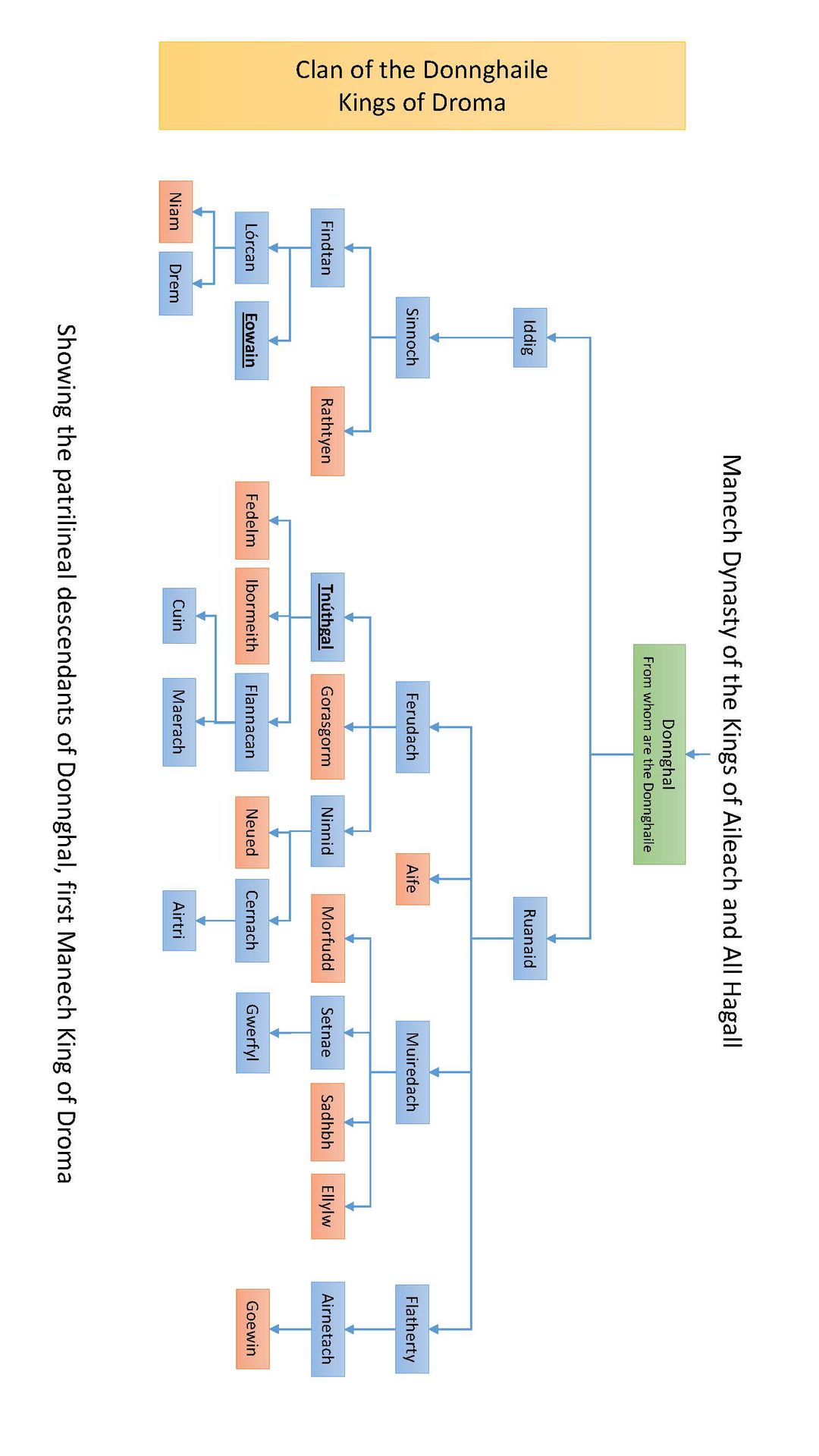People & Customs
Family is the cornerstone of Iathrann culture. A person has no legal rights except those derived from membership in a family. People without a family are considered to be "headless" and dangerous outlaws.
As such, genealogy and ancestry is very important in Iathrann. A person's family may have earned hereditary rights to which the person is entitled if ancestry can be proven.
For example, any candidate for kingship must be able to prove genealogical descent from a king within the last six generations. The prestige and renown of a king or a warrior can be greatly increased if his lineage ties him to some great hero of the past. Thus, careful records are kept regarding births, deaths, and genealogy, and one of the primary responsibilities of the Iathrann drymyn is to memorize and be able to recite word-perfect on demand the genealogy of all of the major kings of Iathrann, as well as any local minor kings in the drymyn's area of responsibility.
A great deal of time and energy is also spent by the ruling houses to establish "legal" genealogical connections to the great heroes and kings of the ancient past, in order to validate and/or legitimize the position of those ruling houses.
As can be seen from the Donnghaile genealogy below, Eowain the Bear and his elder brother, Lórcan, are great-great-grandsons of the great hero Donnghal, who conquered the land of Droma and established himself as king over its inhabitants. This entitles them to be considered for the kingship of Droma when it becomes vacant.
Likewise, however, their eldest cousin Tnúthgal, a great-grandson of Donnghal, is also so entitled, and arguably has a stronger claim, for he is himself older and more experienced than the sons of Findtan, and closer in relation to their illustrious ancestor.
Primogeniture is not recognized in law, and seniority in the male line is a valid criterion for succession. By this rule, Tnúthgal is the most senior surviving male relative of the great Donnghal and has a right to expect he will succeed to headship of his kindred group. That his younger cousins have each succeeded to the throne before him must seem like an intolerable jest of the Gods.
In turn, the Donnghaile clan as a whole is descended from the Manech Dynasty of the Kings of Aileach and the Fifth-Kingdom of All Hagall. This dynasty traces its lineage back to the days of Manech Black-Knee, a High King of Iathrann some 250 years earlier, who in turn traced his lineage back five hundred years to the reign of Manech Nine-Eyes.
Manech Nine-Eyes then claimed a direct lineal descent from the ancient kings of Breogan who first came to Iathrann from over the sea in the earliest days of the Gallavach Settlement some 1500 years ago, and those kings claimed a lineage that went on back to the earliest known period of Mannish history.
How much of these lineages can be attributed to actual fact and how much is the result of fanciful court genealogists interested in propagating the so-called "legitimacy" of their royal patrons is an open question, but the fact remains that family and ancestry are a vital part of personal identity in the lands of Iathrann.

Bạn đang đọc truyện trên: AzTruyen.Top